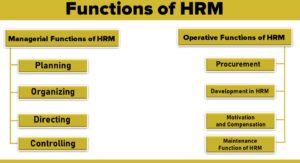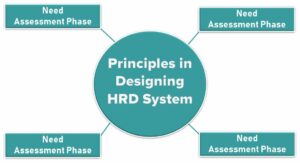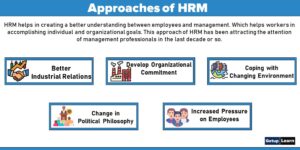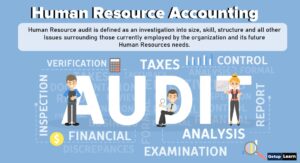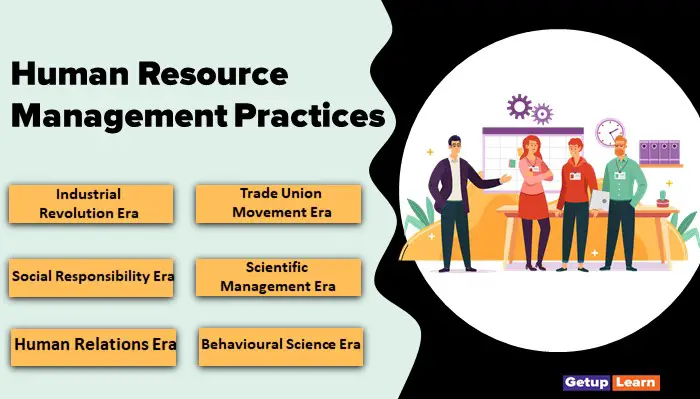
Table of Contents
Human Resource Management Practices in India
The development of HRM over a period of time is important for understanding the philosophy, functions, and practices of HRM that are followed in different situations so it relevant HRM practices are evolved in the present situation.
HRM being a part of the management discipline has followed the pattern of management development because of the interrelationship of the problems of both fields. Though Human Resource Management as a field of study has a relatively recent origin, the history of management of people in organizations, particularly in state administration, is quite old.
However, these ancient developments could not create much impact on the recent development of literature and practices of HRM as these developments were concerned primarily in state administration. Some serious thoughts were applied toward the effective utilization of the labor force in industrial organizations after the industrial revolution that started in the 19th century.
The classification of various stages of development of HRM in terms of the period shows the beginning of that era. In each era, emphasis has been put on a particular approach to managing people at work.
A succeeding era does not mean the complete end of the proceeding era but there has been overlapping in these. We discuss below the main features of these eras and the different types of practices that have been adopted.
The following human resource management practices may be classified as follows:
- Industrial Revolution Era
- Trade Union Movement Era
- Social Responsibility Era
- Scientific Management Era
- Human Relations Era
- Behavioural Science Era
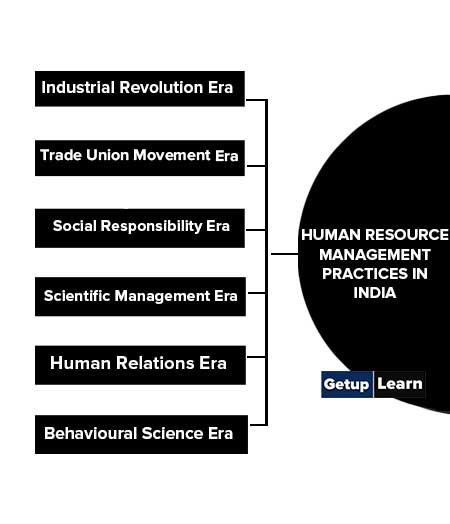
Industrial Revolution Era
The systematic development of HRM started with the industrial revolution that started during the 1850s in Western Europe and USA. The industrial revolution consisted, essentially, of the development of machinery, the use of mechanical energy in production processes, and consequently the emergence of the concept of the factory with a large workforce working together.
The factory system replaced the old cottage system. The industrial revolution brought out a number of changes like centralized work locations with a large number of workers working together, mechanical production processes, migration of workers from their place of origin, and indirect contact between factory owners and workers.
In order to manage people in the factory system of the industrial revolution, three systems of HRM have developed: recruitment of workers or employees, training for workers, and control of workers. However, the basic philosophy of managing workers revolved around master-servant relationships.
Trade Union Movement Era
Shortly after the emergence of the factory system, workers started to organize themselves based on their common interests to form workers’ associations which were subsequently known as trade unions. The basic objectives of these associations were to safeguard their interests and to sort out their problems which arose primarily because of employment of long hours of work, child labor, and poor working conditions.
Later other aspects of work such as economic problems and wages, employee benefits and services, etc. also became issues. These trade unions started such weapons as strikes, walkouts, slowdowns, boycotts, etc. for the acceptance of their demand.
These activities on the part of workers forced owners and managers to the adoption of employee grievance handling systems. The acceptance of arbitration as a means of resolving conflicts of rights, disciplinary practice, the expansion of employee benefit programs, the liberalization of holiday and vacation time, clear definition of job duties, job rights through seniority, and installation of the national and defensible wage structure.
In the first decade of the 20th century, some factory owners started adopting a more humanistic and paternalistic approach toward workers. The paternalistic approach to labor-management is based on the philosophy that labor is just like a child and the owner is just like a father and the owner should take care of his labor just like a father takes care of his children.
Those industrialists who adopted a paternalistic approach offered a number of concessions and facilities to the labor force like reduced number of work hours, improved facilities at the workplace, model villages for workers, etc.
All these practices led to the development of the social welfare aspect of labor management. Many critics of the paternalistic approach viewed that this approach was adopted to overcome the problems posed by the labor union movement as plenty of trade unions emerged which frequently interrupted work performance.
Employers observed that workers were going out of their control and to overcome this problem, they implemented a welfare scheme. Thus, this was a compulsion rather than a philosophy.
Scientific Management Era
Around the beginning of the 20th century, Taylor started to find out ‘one best way of doing things based on time and motion studies. On the basis of his experiments, he was able to increase workers’ productivity considerably and wrote many papers based on these experiments and a book on scientific management. The main principles of scientific management are:
- Replacing rule of thumb with science.
- Harmony in group action.
- Cooperation between management and workers.
- Maximum outputs in place of restricted outputs.
- Development of workers.
Human Relations Era
Around the 1920s, management researchers gave a close look at the human factor at work and the variables that affected people’s behavior. Before that, Hugo Munsterberg wrote a book on ‘Psychology and Industrial Efficiency’ which suggested the use of psychology in the field of personnel testing, interviewing, attitude measurement, and learning. etc.
This brief period was termed as ‘Industrial Psychology Era’. In 1924, a group of professors from Harvard Business School, USA, began an inquiry into the human aspects of work and working conditions at the Hawthorne plant of Western Electric Company, Chicago. They conducted research from 1924 to 1932 and arrived at the conclusions that the productivity of workers depended on:
- Social factors at the workplace.
-
Group formation and group influence.
- Nature of leadership and supervision.
- Communication.
Behavioural Science Era
In contrast to human relations which assume that happy workers are productive workers, behavioral scientists have been a goal and efficiency-oriented and consider the understanding of human behavior to be the major means to that end.
They have tried several sophisticated research methods to understand the nature of work and the people in the work environment. The Contribution of behavioral scientists to management practices consists primarily of producing new insights rather than new techniques.
It has developed or expanded a useful way of thinking about the role of the manager, the nature of organizations, and the behavior of individuals within organizations.
Human Resource Management Practices Conclusion
As against the human relations model, they have given the concept of the human resource model. Major conclusions of the contributions made by behaviouralists can be presented as follows:
- People do not dislike work. If they have been helped to establish objectives, they will want to achieve them. In fact, the job itself is a source of motivation and satisfaction for employees.
- Most people can exercise a great deal of self-direction, self-control, and creativity that are required in their current job. Therefore, there remains untapped potential among them.
- The manager’s basic job is to use untapped human potential in the service of the organization.
- The manager should create a healthy environment wherein all subordinates can contribute to the best of their capacity. The environment should provide a healthy, safe, comfortable and convenient place to work.
- The manager should provide for self-direction by subordinates and they must be encouraged to participate fully in all important matters.
- Operating efficiency can be improved by expanding subordinate influence, self-direction, and self-control.
- Work satisfaction may improve as a ‘by-product’ of subordinates making full use of their potential.
- Systems and Contingency Approach Era: Systems and contingency approach has attracted maximum attention of thinkers in management in the present era. It is an integrated approach that considers management in its totality based on empirical data.
The basic idea of this approach is that the analysis of any object must rely on a method of analysis involving simultaneous variations of mutually-dependent variables. This happens when a systems approach is applied in managing.
What is the human resource management era?
These human resource management eras may be classified as follows:
1. Industrial Revolution Era
2. Trade Union Movement Era
3. Social Responsibility Era
4. Scientific Management Era
5. Human Relations Era
6. Behavioural Science Era etc.



